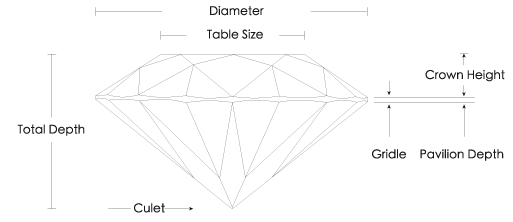
Education 1
Fancy color diamondsLove the sparkle and brilliance of a diamond, and are dazzled by the alluring hues of colored gemstones like rubies, emeralds, and sapphires? Then maybe it’s time for you to consider a growing trend in the world of jewelry – fancy colored diamonds.
Only 1 in every 10,000 diamonds is a natural color stone and makes the grade as a fancy color diamond. For this reason, fancy color diamonds are purchased almost exclusively for the intensity and distribution of their color. The criteria usually used when purchasing a white or colorless diamond, such as cut proportions and clarity, are less important when purchasing a fancy color diamond.
The information below will help you understand fancy color diamonds to determine the diamond that's right for you.
This system rates diamonds based on the 4Cs – color, clarity, cut, and carat weight.

The GIA certificate
Our fancy color diamonds are independently analyzed and graded by the Gemological Institute of America (GIA), which is among the most respected laboratories in the diamond industry. Each diamond is accompanied by a colored diamond identification and origin report. This authoritative report lists the diamond's specifications, including its color grade, and ensures its natural origin. All our fancy color stones are with the "origin of color" section of the certificate.

Color
Color intensity, meaning the deepness or richness of the color, is the most important consideration when purchasing a fancy color diamond. The more intense the color, the more rare and valuable the diamond. Fancy color diamonds are graded in order of increasing intensity: Faint, Very Light, Light, Fancy Light, Fancy, Fancy Intense, Fancy Vivid, Fancy Dark, and Fancy Deep

Carat
After color grade, carat weight has the most impact on price for fancy color diamonds. Large gems are discovered much less frequently than small ones. This makes large diamonds much more valuable. For this reason, diamond prices for fancy color diamonds rise exponentially with carat weight.

Clarity
Due to the nature of fancy color diamonds, clarity is less important than it is in colorless stones. This is because inclusions tend to be masked by the diamond's color.

Cut
While cut describes a diamond's light performance, dimensions and finish; shape refers to the overall outline of the diamond when viewed from the top (e.g. round, princess or marquise). It's important to note that many fancy color diamonds are cut into non-traditional shapes to enhance their natural color. Due to the rarity of fancy color diamonds, a specific shape in a specific color may not always be available.